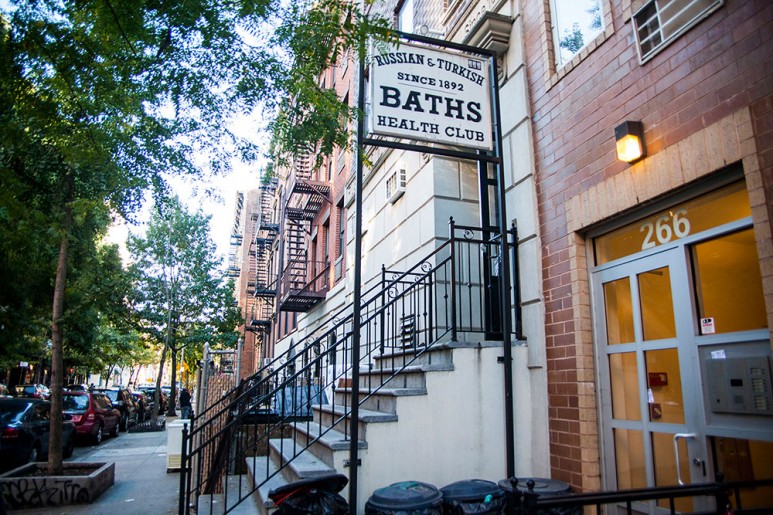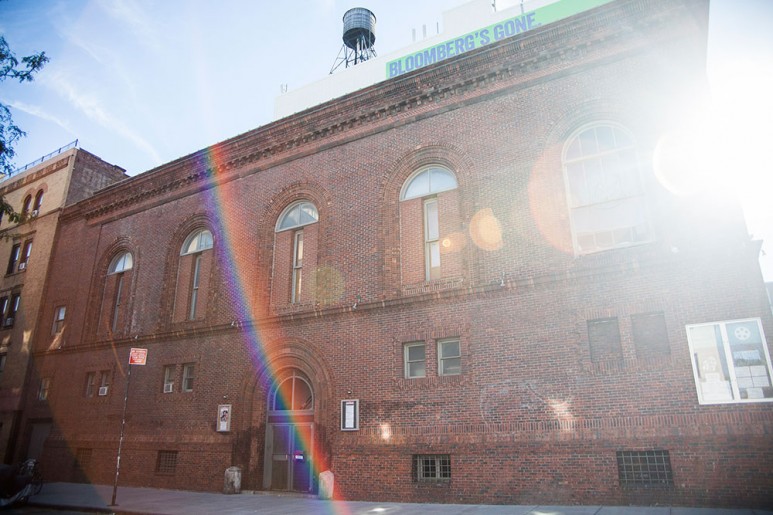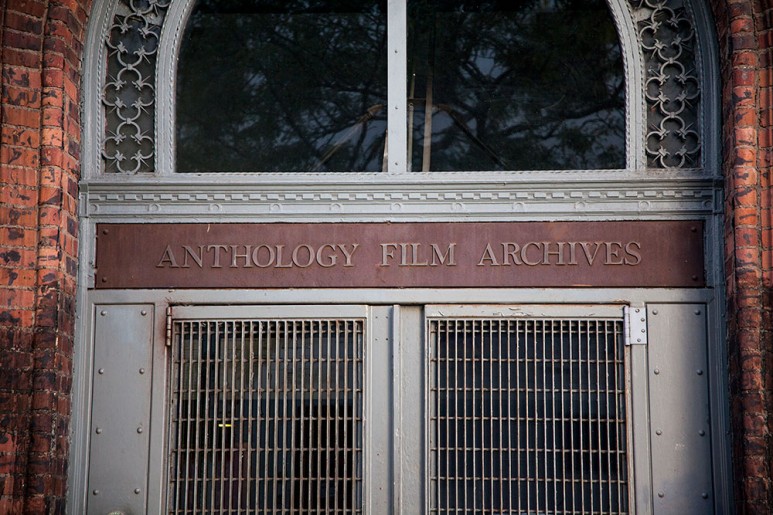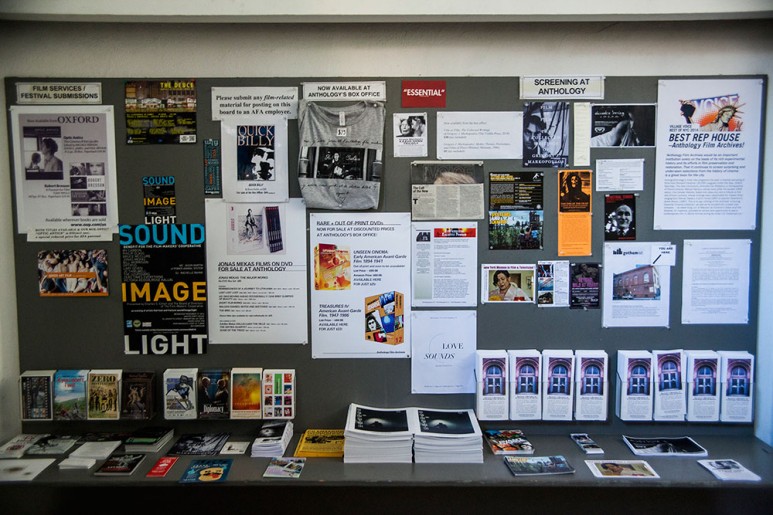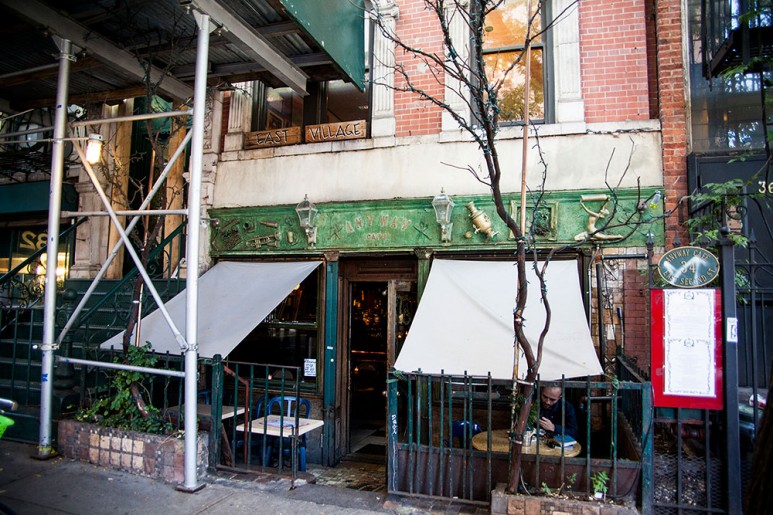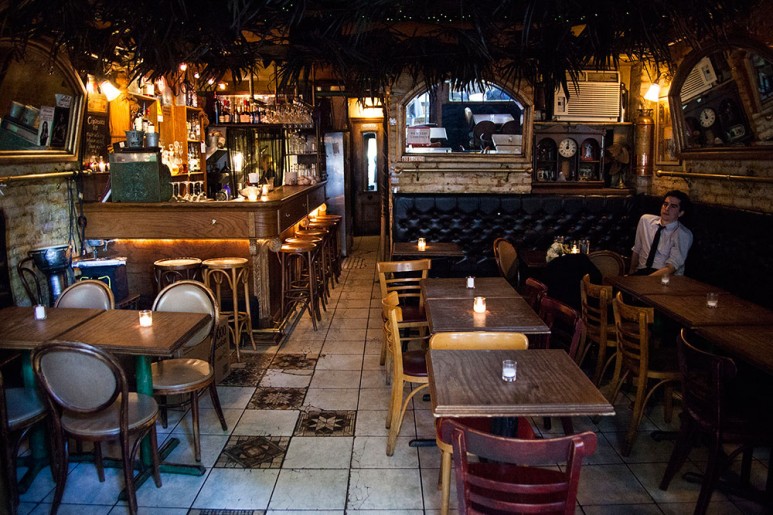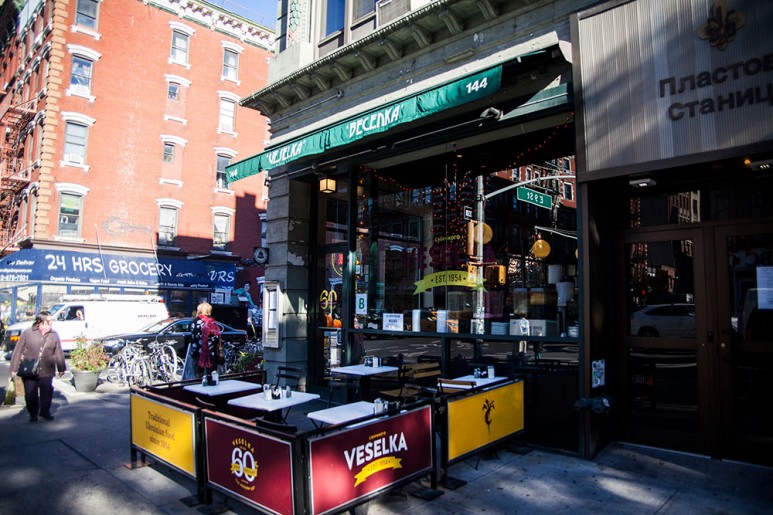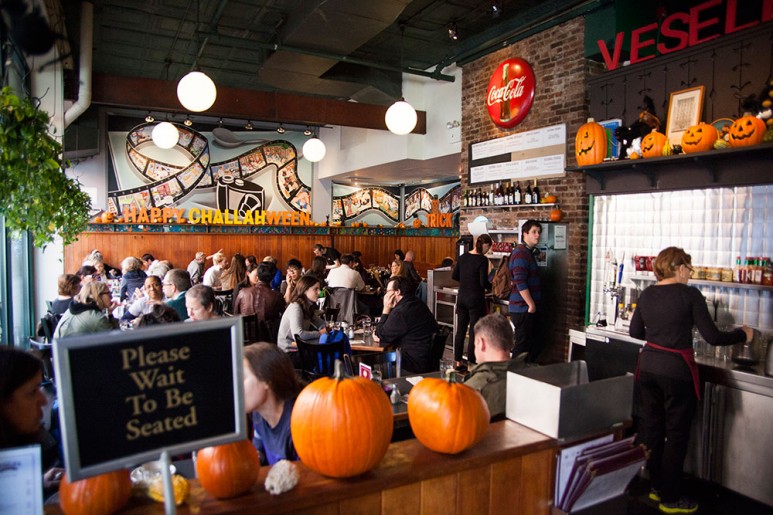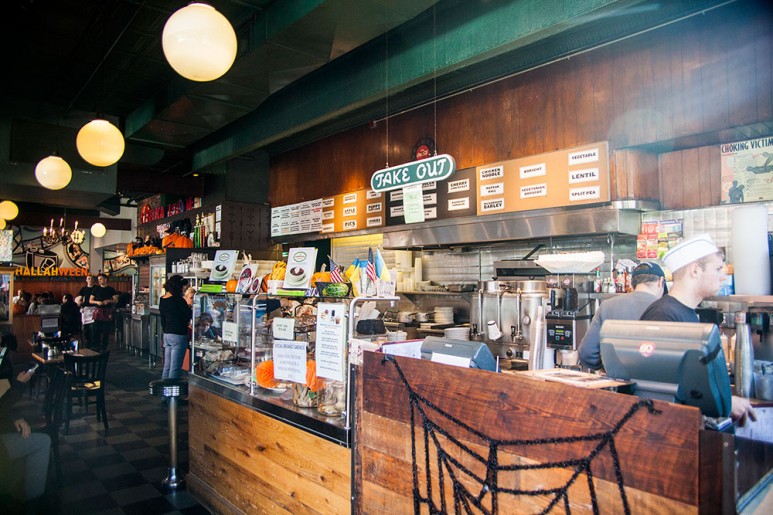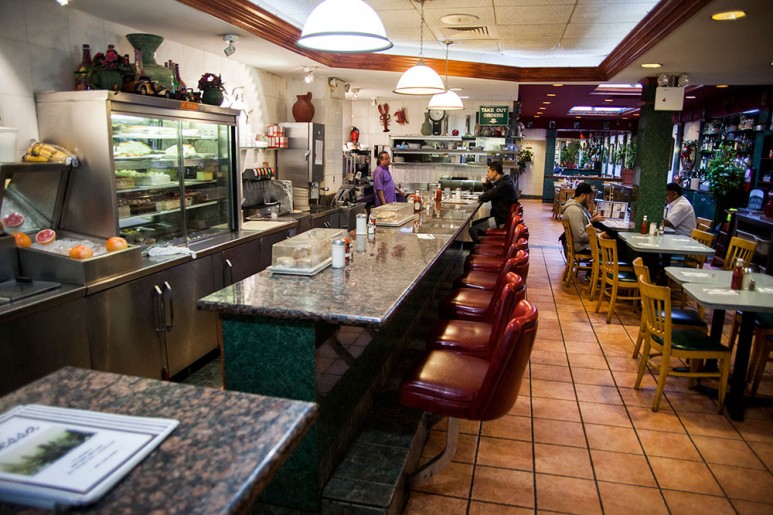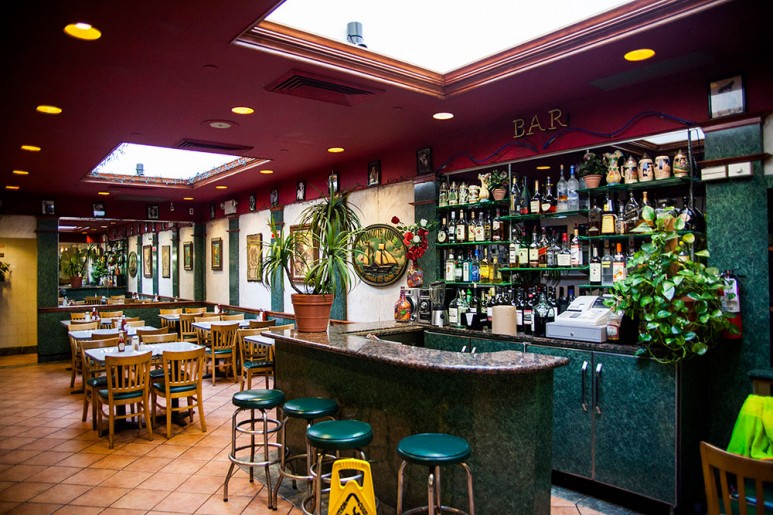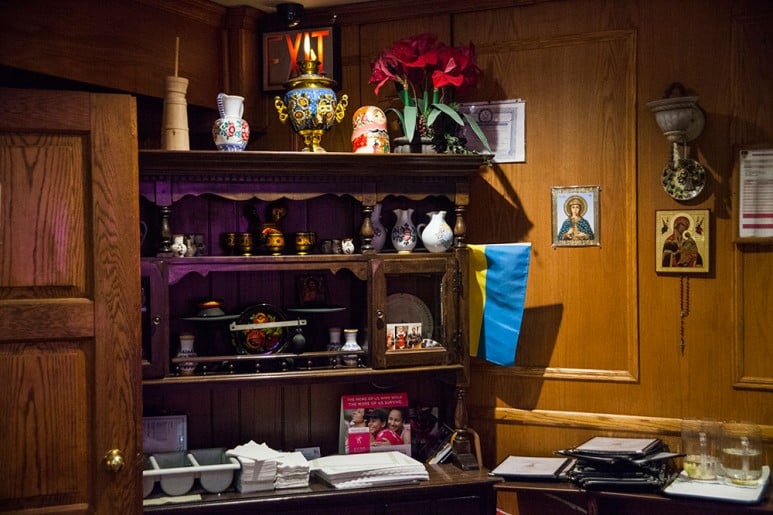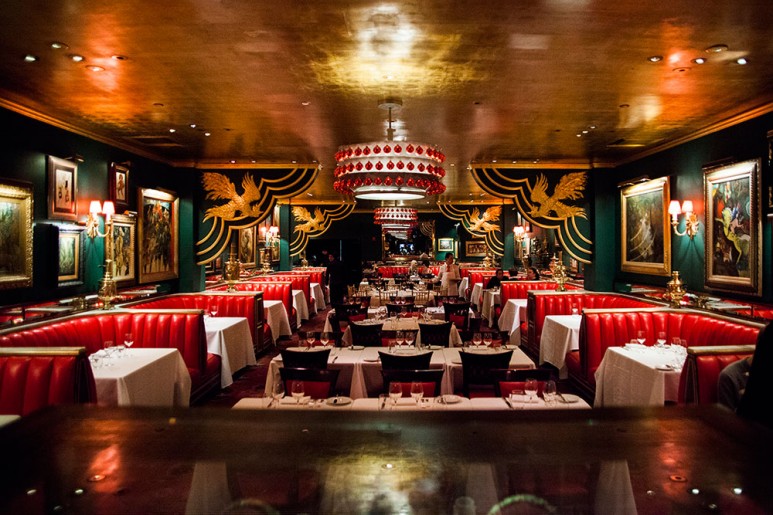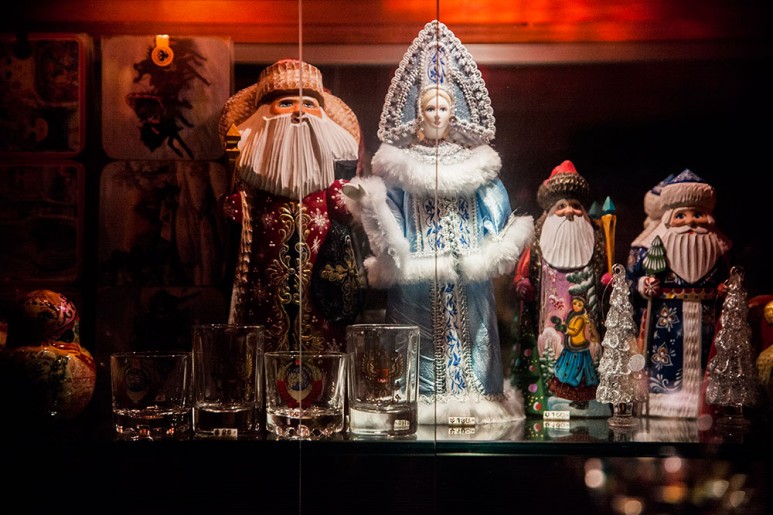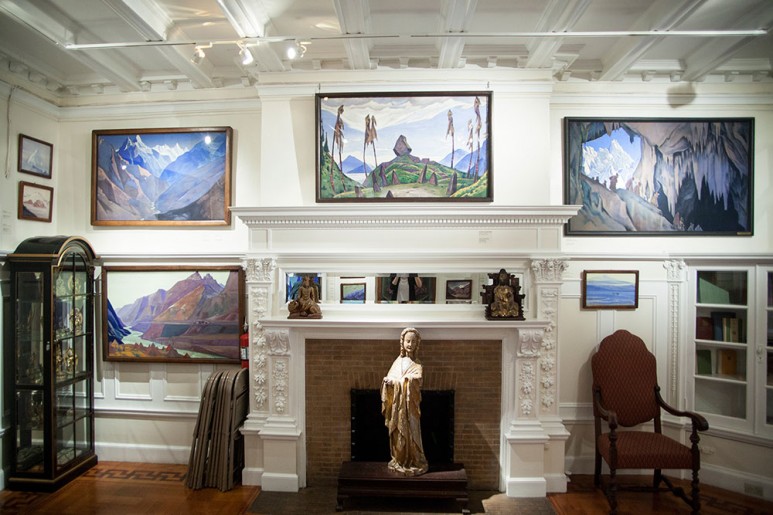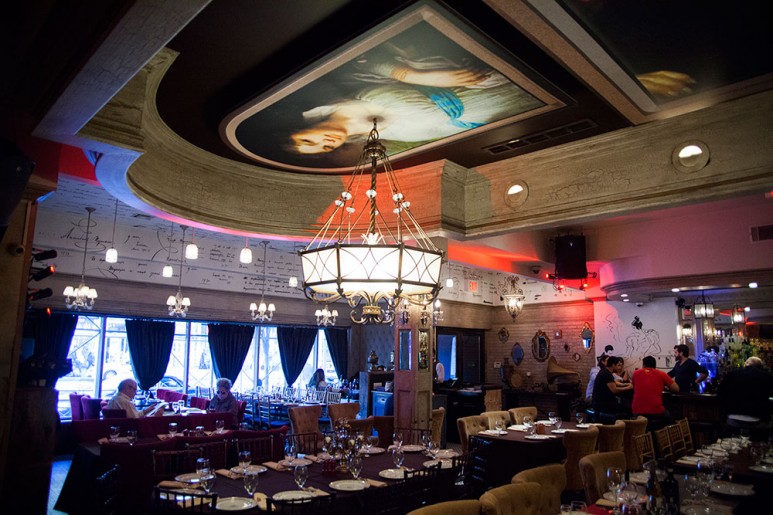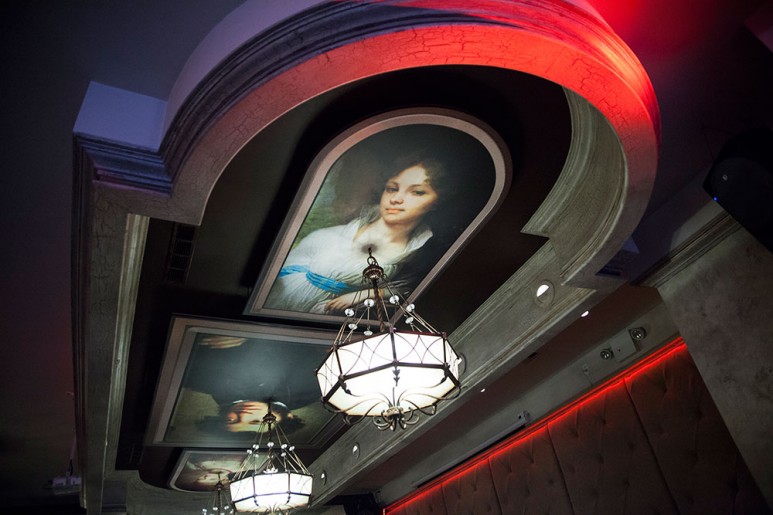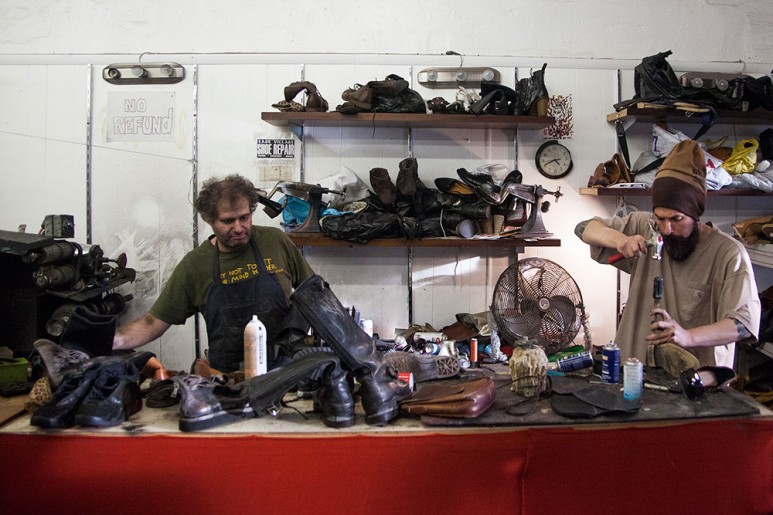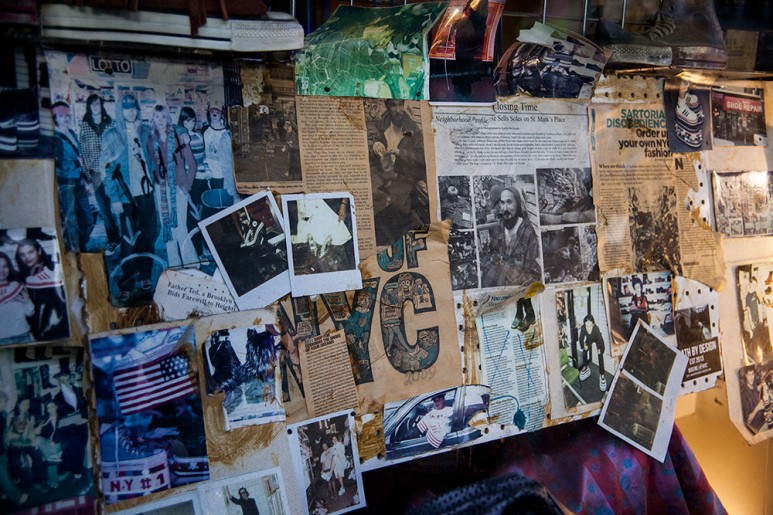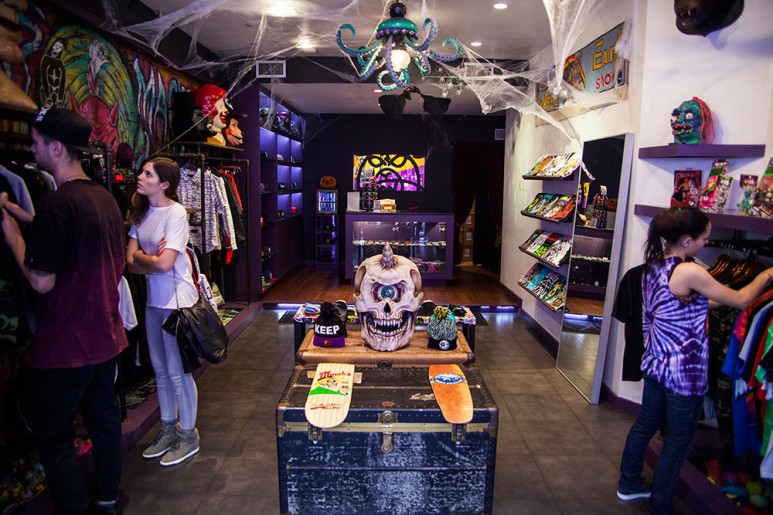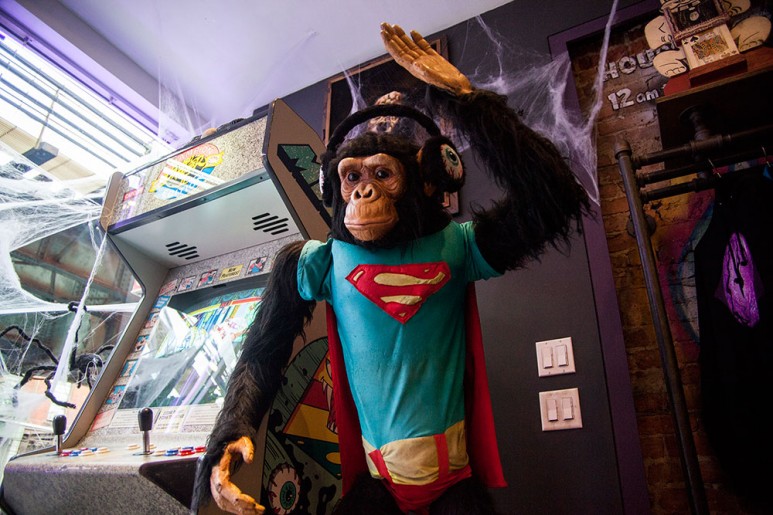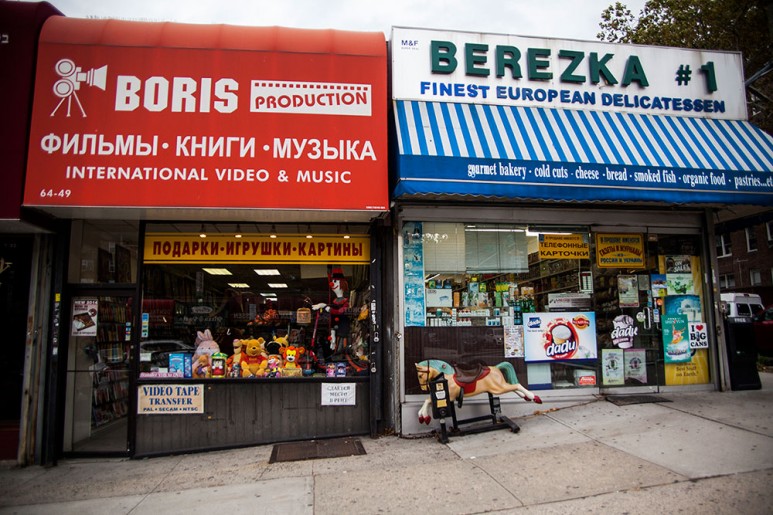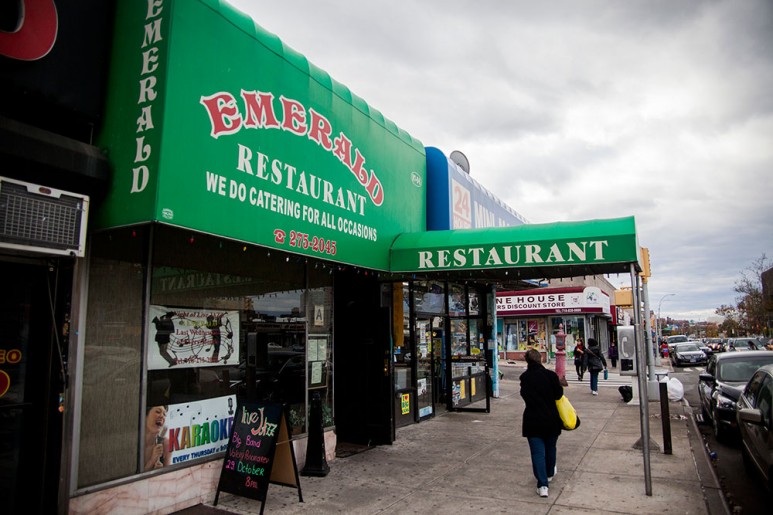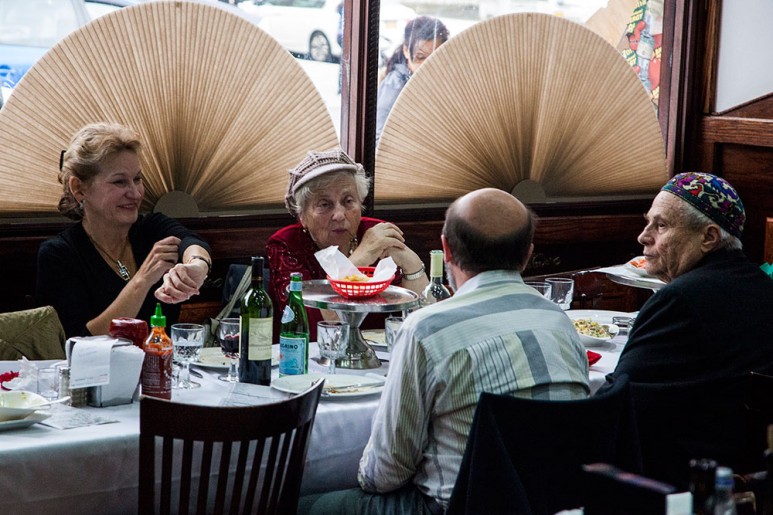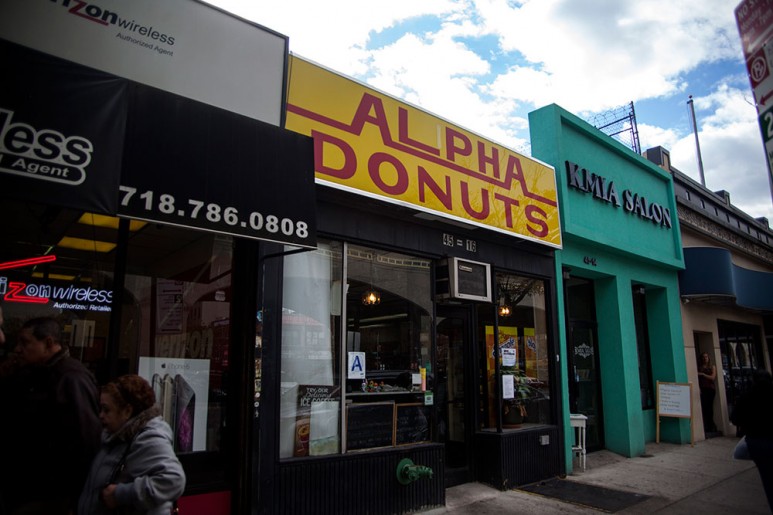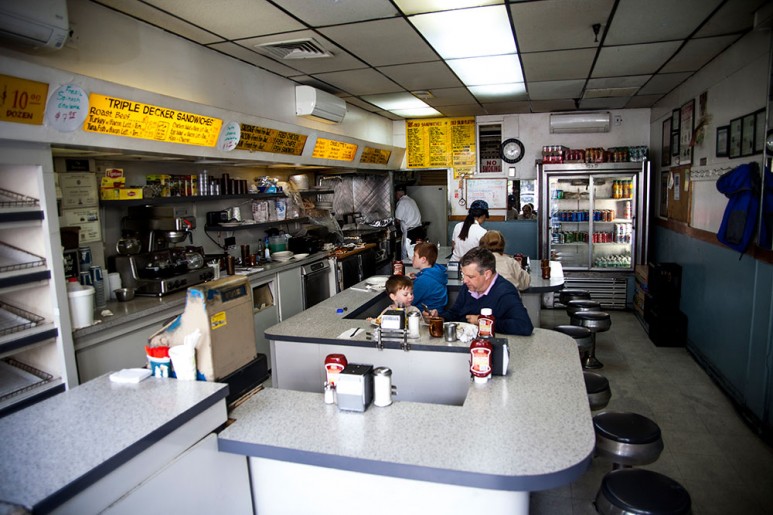Red apple: an insider’s guide to Russian New York
Brooklyn's been big in Moscow for the last few years, but Russian influence in NYC goes back much further. Alexandra Tatarsky spends a long weekend in her favourite hangouts and hideaways
Everyone’s heard of the Brighton Beach enclave of Little Odessa, with its boardwalk nightclubs and stout, fur-wrapped ladies sashaying down the avenue for a gleaming slice of salo — smoked and salted fat — at the market. But Russian New York reaches far beyond Brighton. Billionaire oligarchs buy up the tallest new towers in town, shashlik joints beckon with their late-night fluorescence and Russia-inspired bars sell overpriced vodka infusions while a thriving tranche of New York literary life, cinema, art and fashion takes its cues from the Soviet era. For many years, Russians and New Yorkers have longed for each other as a beacon of alternative worlds, and the glorious mix of Russian cultural reference points in NYC — whether remembered, imagined or invented — makes for an intoxicating brew. Consider this guide a teaser, a sampling of Russian New York intended to whet the appetite for further tastes.
Friday in Russian Manhattan
East Village
Our journey begins at the Russian-Turkish Baths, an East Village neighbourhood haunt since 1892 and the oldest Russian baths in town. A microcosm of neighbourhood histories and changes, the baths remain a favourite hang-out for Eastern Europeans, Puerto Ricans and young artists and writers — all of whom can be observed enjoying Siberian pelmeni (dumplings) in the cafeteria after a thorough oak-leaf beating.
Sleepy from the combined effects of steam room and chicken cutlet, I amble over to Anthology Film Archives, founded by the Lithuanian poet, avant-garde filmmaker and local fixture Jonas Mekas, to catch a selection or two of the Essential Cinema Repertory, which includes the work of Soviet-era greats Alexander Dovzhenko, Vsevolod Pudovkin and Dziga Vertov. I stumble out into thick August night air in a montage-induced daze and famished after an Eisenstein double feature.
Luckily, right down the block is the Russian hideout Anyway Cafe, which has live music every night. The decor reflects Anyway’s mixed French-Russian-New York influences: a stuffed Bert doll; mangled Cheburashka bears and porcelain Pierrots gaze from various corners of the dark and moody bar. Plastic jungle leaves are woven through the ceiling pipes and musicians hang around to jam late into the night after their gigs. As I’m taking notes about my flaming Molotov Cocktail, a curly-haired fellow beside me leans over and asks with great solemnity, “Are you a poet?” Natasha in leopard print at the bar rims a glass of glühwein in warm honey. “You better come back Tuesday ready to sing cuz we’re gonna make you sing,” says a man they call El Baron as I head back out into the night.
“Don’t worry, no communists here!” the bartender at KGB Bar tells me, grinning and moonwalking from one end of the bar to the other. “But fuck capitalism and fuck those motherfucking capitalist pigs!” He raises a fist to the faded poster of a glorious proletarian hanging on the red walls and then laughs wildly while handing me a bottle of Baltika 7 beer. I have never encountered an actual Russian at KGB Bar but there are always out-of-work actors hanging around while the Soviet flag billows above the cash register. A Ukrainian Socialist club for nearly five decades, KGB Bar has been a haven for literary and theatre types with a penchant for Soviet kitsch since 1993 and proudly boasts memorabilia for its original staged production of Isaac Babel and the Gangster King, a musical about a Russian-Jewish writer living in Moscow in 1936. I stay up until sunrise discussing the curious and enduring popularity of Soviet aesthetics with a comedian from Queens.
Fortunately, to soak up the Baltika in my belly, there are two nearby Ukrainian joints to choose from: Veselka and Odessa are both famous for their borscht, blintzes (Russian-Jewish pancakes) and 24-hour breakfasts. The sun is fully up. In just a few hours, the Ukrainian National Home with its secret backroom tango club and neighbouring bar Sly Fox, a popular haunt of young Russophiles, will open their doors. Not a bad way to spend a weekend.
Saturday in Russian Manhattan
Times Square to SoHo
I head uptown to spend the afternoon at a place devoted to the “strange and disturbing paintings of Nicholas Roerich”, as once described by H P Lovecraft. The Nicholas Roerich Museum hosts free concerts, readings and screenings along with 150 works depicting heavenly battles and magic flautists from the noted Russian artist, writer and theosophist.
But as night falls, my investigation turns from spiritual to spirit-ed with a tour of vodka bars old and new. Near Times Square, a cluster of old-school Russian restaurants has aged alongside the theatres, filled with lively patrons against a fading set. There is frequently a Chekhov production running nearby and Uncle Vanya provides a reasonably priced and surprisingly homey post-show meal — the bar truly feels like your uncle’s home. Potted plants and a worn couch offer a welcome reprieve from the surrounding glitz.
Crouching directly across from each other like duelling cousins, the Russian Vodka Room and the Russian Samovar command West 52nd street. Over at the Vodka Room, a jazz trio starts a cover of Girl from Ipanema to gasps of excitement at the bar. Everything in the place shares a dull red glow, from the velvet curtains to the votive candles to the bartender’s lipstick to the exit sign.
Across the street at the famous Samovar, Joseph Brodsky glowers from the corner table — or at least his framed portrait does. “Brodsky’s table,” our server informs me, referring to the poet who backed the restaurant with dancer Mikhail Baryshnikov and owner Roman Kaplan in 1986. The spirit of Russian expat intelligentsia one generation removed haunts the room, from walls crowded with black-and-white photos of writers and musicians under dusky-fringed lamps.
Downtown, a newer breed of overpriced Russian vodka bar dominates. At Russian chain Mari Vanna, pulsing music slips between American and Soviet 80s classics and tchotchke chic pervades: accordions, suitcases, records and an abacus pile up on shelves of old books beneath gleaming chandeliers. The room opens pleasantly onto a leafy storefront and impossibly tall women coo at the bar. Don’t miss “Model Tuesdays”, where models cook their favourite dishes!
On Sixth Avenue, the vaguely Pushkin-themed Onegin is generally sad and empty while near the Williamsburg Bridge, Moscow 57, a younger offshoot of the infamous uptown Russian Tea Room, provides little beyond cliche. In SoHo, Pravda is styled as a bohemian basement hangout but the crowd swings more towards stockbroker; whether by ironic design or coincidence. On one side of the sloping ceiling искусство is printed in large block letters, while across the bar is проблемы. Literally: Art // Problems. Tell me about it. Nearby Ariana, founded by Russian-American popstar Ariana Grinblat, provides a more contemporary Russian atmosphere and dishes like Velvet Borscht with spare rib and oxtail broth. “Business is good,” says the charming barman and inventor of Ariana’s $56 Caviar Martini (served with caviar lollipop). “Beautiful people, model agencies and money guys.”
Sunday in Soviet Brooklyn
Gowanus – Williamsburg – Bushwick – Sheepshead Bay
Sunday begins at the Old American Can Factory, the headquarters for Brooklyn’s Ugly Duckling Presse. Ugly Duckling is largely responsible for introducing English-speaking readers to many forgotten and contemporary Russian and Russian-American poets such as Daniil Kharms, Alexander Vvedensky, Vsevolod Nekrasov, Eugene Ostashevsky, Marina Temkina and Alexander Skidan. In an industrial room insulated with cardboard boxes of overstock, volunteers can be heard alternatively sweet-talking and berating crotchety, beautiful letterpress machines while others are busy binding and packing real, live books.
Sated with literature in Gowanus, we head to Bushwick for art and fashion. “I see, like, a beam into you,” says Boris, gesturing towards a row of boots and sneakers shimmering with spray paint. “If you want to be superman, I know. If you want something to go with gold, I know.” Boris arrived in New York as a teenager from Belarus to evade military service — “Cost me two fucking crates of vodka” — and has been enriching the lives of New Yorkers ever since with his radical shoe designs and stories. I stop by East Village Shoe Repair, newly relocated to Brooklyn from an infamous hovel on St Mark’s Place, just to say hello and leave two hours later with eight pairs of shoes I didn’t know I needed. Boris is a salesmen artiste par excellence and can make the long-time owner of one lonely pair of disintegrating skater shoes joyously purchase silver platforms made for a ballroom dance on a space ship.
Several blocks down Broadway next to a defunct Matzoh bakery, the Мишка (Mishka) store stands proudly framed in lavender neon. Мишка plays on the name of founder Mikhail Bortnik and the name of the bear mascot of the 1980 Moscow Olympics — mishka is both a diminutive for the name Mikhail and also means “little bear” in Russian. Inside, stuffed bears give toothy grins and wear military caps customised with Мишка’s logo, a bloodshot eyeball. The aesthetic is a mash-up of 1970s and 1980s influence: pop culture, punk, hip-hop and Soviet. Skaters, artists and sneakerheads can all be seen sporting baseball hats and T-shirts emblazoned with the Cyrillic lettering. A small sickle is sewn into each beanie.
A similar preoccupation with Soviet imagery can be seen at nearby Mami Papi Gallery, founded by artists Katie Marshall and Nathaniel Flagg. Although akin to Soviet-era apartment exhibitions created to present unofficial work, Mami Papi hosts strange and exciting living room shows that investigate the allure of official Socialist Realist art, particularly for young American artists who pine to make work outside the hypercapitalist art market. A typical evening’s antics could include illustrations of Soviet coming-of-age tale Vratar’ Respubliki (Goalkeeper of the Republic), renditions of Socialist Realist poetry set to keyboard music and a pair of cousins playing the accordion on the roof while doves are released into the Brooklyn sky. In bouts of cross-cultural enthusiasm, Marshall has a habit of befriending immigrant youths at the Georgian restaurant Pirosmani on Avenue U and inviting them over to join the discussion of the artist’s role in society, while enjoying abundant heaps of sausage and watermelon.
After a Mami Papi jaunt, I take the L train towards Williamsburg and the delights of underground movie theatre Spectacle. For only five bucks, I watch a rarely screened film in a tiny dark room that feels like a secret clubhouse. With a decidedly Situationist bent — the theatre is called Spectacle, after all — the movie house favours “radical polemics” alongside frequent Soviet-era programming, such as hit series Molodost: Films on Soviet Youth. The series explores the parallels between the perestroika youth generation and American so-called millenials, with both “portrayed as either a symbol for hope and reformation, or as lost and apathetic”, as curators Anny Oberlink and Betty Roytburd explain.
Finished with North Brooklyn for the night, I take a long trek south for a drink and snack. At the Manhattan Beach outpost of Anyway Cafe, a man at the bar recommends Fabergé to continue my adventures, because “girls like it there”. Crossing the blue-black waters of Sheepshead Bay, air perfumed by hookahs, families and revellers feasting at Russian, Italian, and Chinese eateries, Fabergé indeed beckons like a hot pink glowing egg. I end the night dancing, admittedly feeling both hopeful and somewhat apathetic.
Monday in Queens
Forest Hills – Rego Park – Little Neck – Sunnyside
In 1991 Sergei Dovlatov wrote of his Queens neighbourhood in A Foreign Woman:
One Hundred Eight Street is our central highway. We have Russian stores, day-care centres, photography studios and barbershops. There is a Russian travel agency. There are Russian lawyers, writers, doctors and real estate agents. There are Russian gangsters, madmen and prostitutes. There is even a Russian blind musician. For us, the native residents are like foreigners. If we hear English spoken, we grow wary. Sometimes, we insist, “Speak Russian!”
In 2014, it feels as if the only thing that’s changed is the name of 108th street — it’s recently been renamed Sergei Dovlatov Way. The grocery store is a гастроном (Gastronom), the post office advertises shipping to Russia and Ukraine by sea or air, the clinic has awning that says on one side “Pain Management” and on the other the far more emphatic “Живите без боли” (Live without pain). Empty bags of sunflower seeds roll down the block like urban tumbleweeds and Russian grandmas on every park bench berate their American grandkids, “Говори по-русски!” — “Speak Russian!” I enter the empty, darkened Emerald Restaurant to ask, “Are you open?’’ and a lone waiter smoking in the foyer replies, “Yes, of course” — and then in Russian, “Do you speak Russian? Speak Russian!” As I eat my golden crispy cabbage blinchiki, he tells me (in Russian) that he never wants to return to Moscow, but here in New York there are too many Russians around for him to learn any English.
A far cry from the tourist destination of Brighton Beach, the heavily Russian and Central Asian neighbourhood of Rego Park is a universe unto itself. Its name harkens back to the optimism of building anew, named as it is after the 1920s development company Real Good Construction. At local Bukharian restaurant Cheburechnaya, I enjoy a bubbling crescent of pumpkin chebureki, a savoury turnover, followed by lamb testicle skewers. The evening atmosphere is joyous with multiple birthday banquets.
The Queens area continues to exert a powerful literary influence. In his memoir Little Failure, Gary Shteyngart recalls “long walks around leafy Kew Gardens, Queens, [my father] trying to teach me the history of Russian-Jewish relations through a series of vignettes he liked to call The Planet of the Yids”. Down Queens Boulevard I find Alpha Donuts, a beloved New York diner and the choice writing locale for poet, translator and Ugly Duckling founding editor Matvei Yankelevich whose book Alpha Donut pays homage to the spot with its title. Once more, night is approaching day. Luckily, Alpha Donuts never closes. I get a coffee and donut in a pre-dawn chill that cools the brain and contemplate a verse by Yankelevich:
I’M THE MONDAY POET
AT THE ALPHA DONUT
Text: Alexandra Tatarsky
Image: Masha Demianova
Illustration: Jonathan Jones
